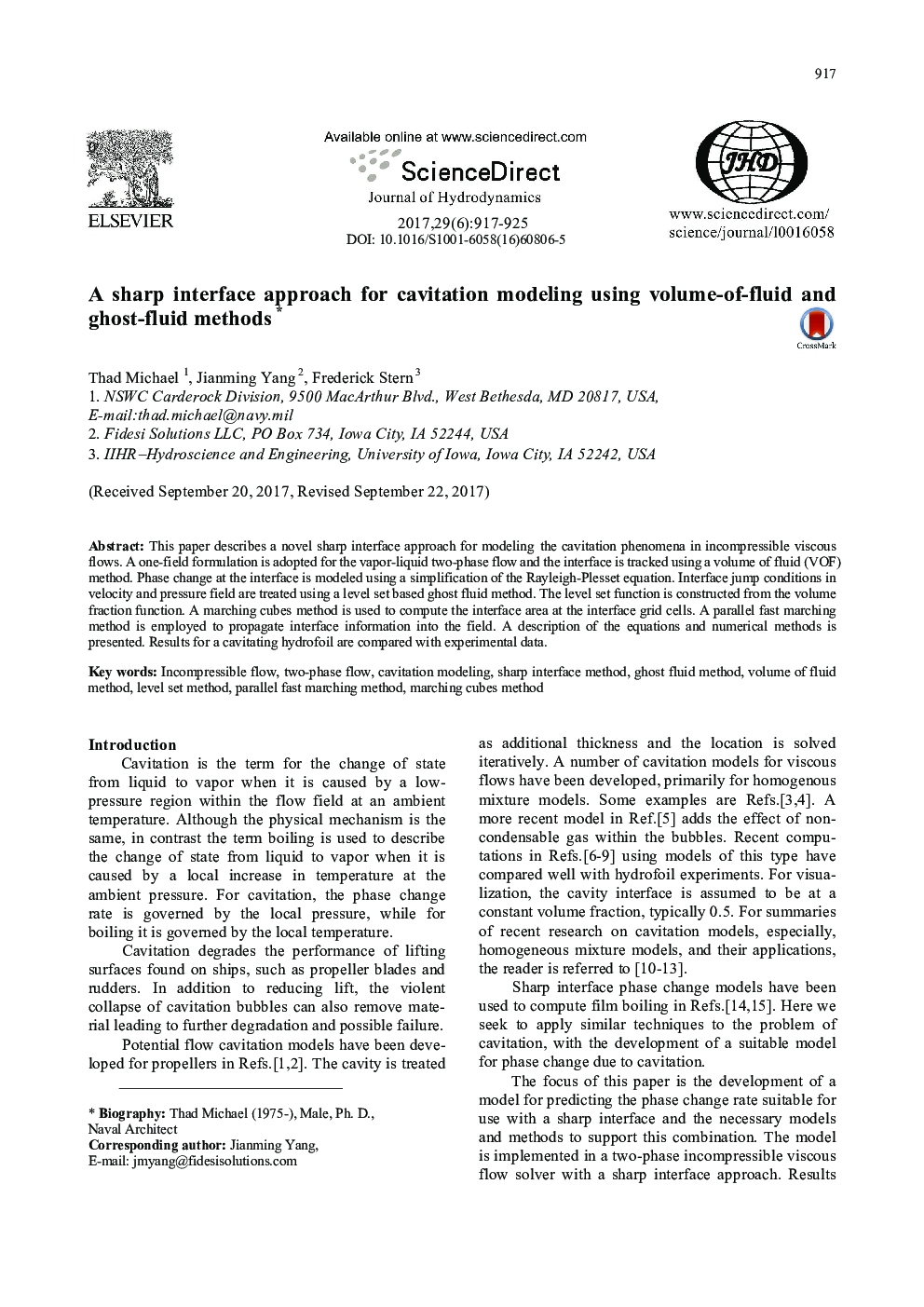| Article ID | Journal | Published Year | Pages | File Type |
|---|---|---|---|---|
| 8060316 | Journal of Hydrodynamics, Ser. B | 2017 | 9 Pages |
Abstract
This paper describes a novel sharp interface approach for modeling the cavitation phenomena in incompressible viscous flows. A one-field formulation is adopted for the vapor-liquid two-phase flow and the interface is tracked using a volume of fluid (VOF) method. Phase change at the interface is modeled using a simplification of the Rayleigh-Plesset equation. Interface jump conditions in velocity and pressure field are treated using a level set based ghost fluid method. The level set function is constructed from the volume fraction function. A marching cubes method is used to compute the interface area at the interface grid cells. A parallel fast marching method is employed to propagate interface information into the field. A description of the equations and numerical methods is presented. Results for a cavitating hydrofoil are compared with experimental data.
Keywords
Related Topics
Physical Sciences and Engineering
Engineering
Ocean Engineering
Authors
Thad Michael, Jianming Yang, Frederick Stern,
